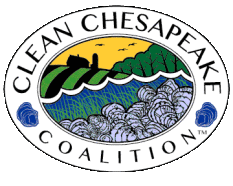
Below is a brief overview of the FERC relicensing process.
To view CCC’s legislative action regarding the relicensing process, please visit our Legislative Action page.
2023
August 1, 2023 – Available below is the CCC’s letter to MDE submitting comments and recommendations regarding the Clean Water Act Section 401 water quality certification (WQC) issued by the MDE on April 27th, 2018 to Constellation Power Generation (formerly Exelon) for the relicensing of of Constellation’s Conowingo Hydroelectric Project by the Federal Energy Regulatory Commission (FERC).
Conowingo Hydroelectric Project – Section 401 WQC Reconsideration Fact Sheet
MDE Public Notice Announcement
Reconsideration Restart Letter
2022
A U.S. appeals court invalidated a federal license for the Conowingo Dam, sending it back to the Federal Energy Regulatory Commission for further proceedings.
The U.S. Court of Appeals for the District of Columbia agreed with environmental groups that FERC exceeded its authority when it approved a 50-year license last year without including the water quality certification that Maryland issued in 2018.
2021
On March 18th 2021, without any prior public discussion, FERC approved Exelon’s Conowingo relicensing for the next 50 years which includes the 2019 settlement agreement between the Maryland Department of the Environment (MDE) and Exelon.
This is the FERC News Release: FERC Relicenses Conowingo Hydroelectric Project
2019
On Tuesday, October 29, 2019, Governor Hogan announced that a settlement had been reached wth Exelon Generation regarding the Water Quality Certification.
On Friday, March 29, 2019, the Clean Chesapeake Coalition, on behalf of its Maryland member counties, filed another Motion to Intervene in the Petition for Declaratory Order by Exelon Generation now pending before FERC.
2018
In October 2018, a Baltimore Court dismissed the first of the suits filed by Exelon. Governor Hogan’s response can be found here.
Interested in the court documents? On October 17, 2018, MDE filed a Notice of Supplemental Authority with an Exhibit. Exelon responded on October 24th.
In a disappointing (though not unexpected) turn of events, Exelon chose to respond to the Maryland Department of the Environment’s (MDE) Water Quality Certification (WQC) with a storm of litigation. In addition to the letter itself, we have provided links to Exhibit A: Complaint in the U.S. District Court, Exhibit B: Administrative Appeal to MDEand Exhibit C: Complaint for Mandamus in Baltimore City Circuit Court.
2013
In June of 2013, the Coalition, on behalf of each of the Maryland counties that serve as its members, filed its Motion to Intervene in the relicensing application process associated with the Exelon’s Conowingo Dam hydroelectric project. This intervention presents the most significant opportunity to save the Bay in our lifetime, given that the license renewal is for a term of 30-50 years. The Coalition’s intervention will hopefully move the Federal Energy Regulatory Commission (FERC) to impose significant conditions upon the relicensing of the Dam. These conditions would require the cleanup of the toxic conditions which exist in sediment of the Dam’s reservoir, thereby minimizing further contaminants from entering the Bay.
2010
In the 2010 TMDL, the United States Environmental Protection Agency (EPA) estimated that the Conowingo Reservoir trapped 55% of the phosphorus and sediment that flowed down the Susquehanna River. That assumption is actually incorrect and is unsupported by the recent studies of the United States Geological Survey (USGS) scientists upon whom the EPA relied to make its erroneous trapping assumption. One such study, Sediment Transport and Capacity Change in Three Reservoirs, Lower Susquehanna River Basin, Pennsylvania and Maryland 1900 – 2012, was especially significant in that it confirms the magnitude of the impact that power projects have on the natural and human enviroment. The Conowingo Reservoir is no longer a significant trap of phosphorus or sediment. Not only are the sediments flushed into the Bay from the Susquehanna River and scoured from the Conowingo Dam reservoir harmful to the Bay’s health, they are detrimental to the State’s fiscal health by having direct negative effects on local shoreline communities and their economies, as well as the multi-million dollar price tag associated with the dredging and maintenance of the polluted sediments.
In determining the sediment and nutrient loading from the Susquehanna River Basin, there exists another critical scientific fact that both EPA and MDE have overlooked. Toxic levels of both nitrogen and phosphorus have bound to the sediments that have been deposited into the lakes and reservoir above the Conowingo Dam. These nutrients are inert, meaning they stay bound to the sediments, while the sediments stay behind in the reservoir and lakes above the Conowingo Dam. However, once those sediments are transported and violently churned through the Dam and into the Bay, changes in water temperature, pH, salinity and the level of dissolved oxygen cause the nutrients bound to the sediments to be quickly dispersed into the Bay, despite the fact that such nutrients were not released into the water while they remained in the Susquehanna River. The end result is that tremendous damage is caused to the Bay because these sediments were not subject to any dredging or other cleanup while they remained stagnant in the reservoir above the Dam.
Sampling of CCC Advocacy in the FERC Process
Letter to MDE re: Section 401 WQC Application
August 16, 2017
Letter to FERC re: Exelon’s WQC Withdrawal
March 4, 2016
Letter to FERC re: the USGS Sediment Transport Report
February 24, 2015
Letter to FERC re: US EPA Request for Inclusion of Draft LSRWA Report
January 6, 2015
Notice of CCC Staff Attendance at MDNR Meeting
November 6, 2013
Letter to FERC re: Exelon’s Extension Request
August 23, 2013
Response to FERC’s June 13, 2013 Letter
June 18, 2013
FERC’s Response to Coalition’s April 4, 2013 Correspondence
June 13, 2013
Response to FERC’s Reply re: Meeting
April 14, 2013
FERC Denial of CCC Meeting Request
March 29, 2013
Letter to FERC re: Meeting Request
February 22, 2013
